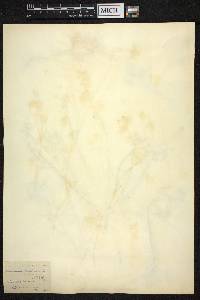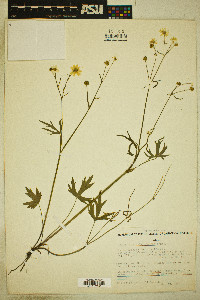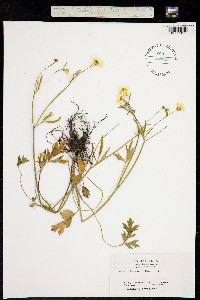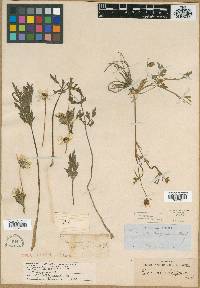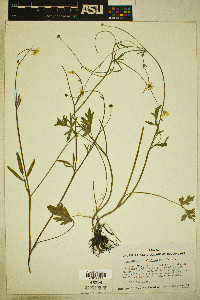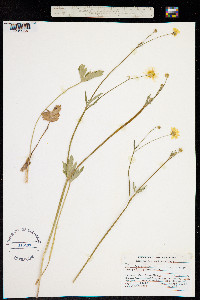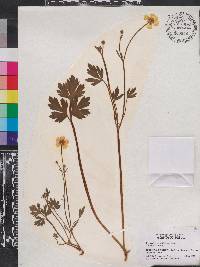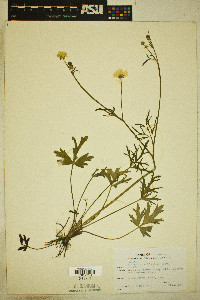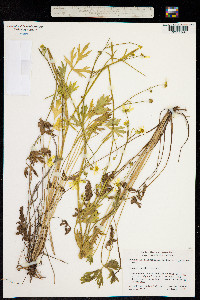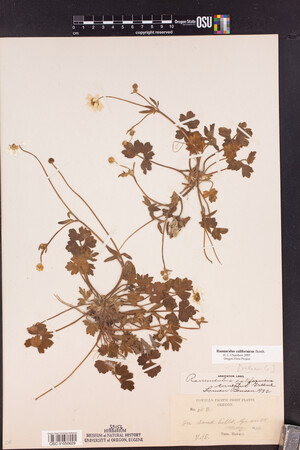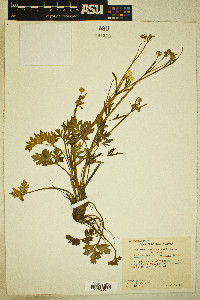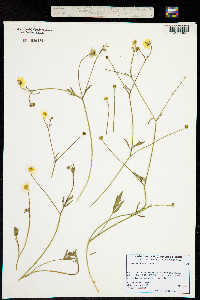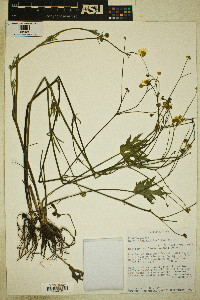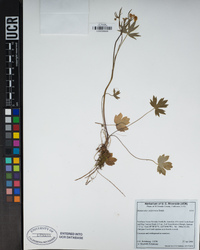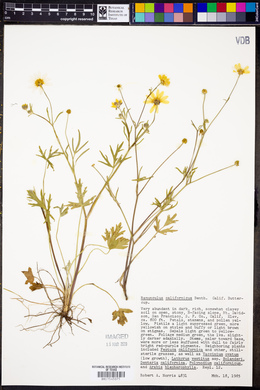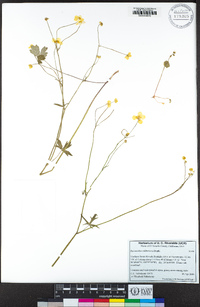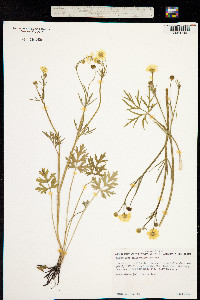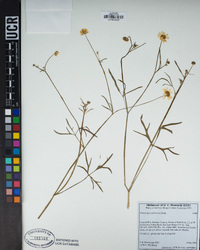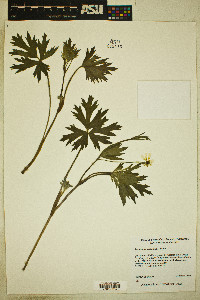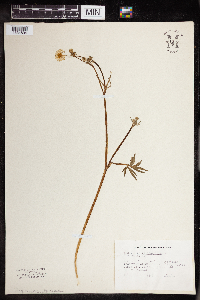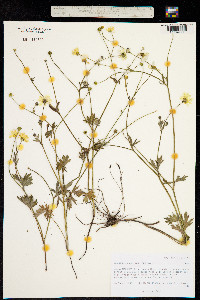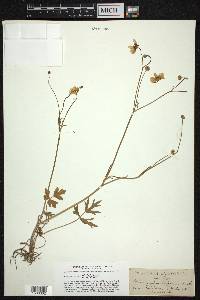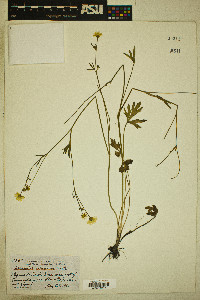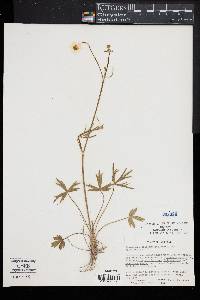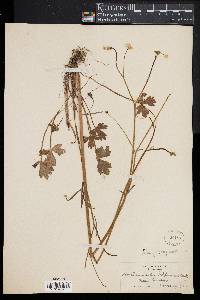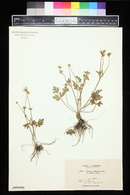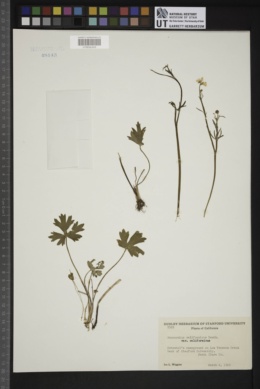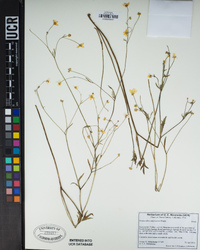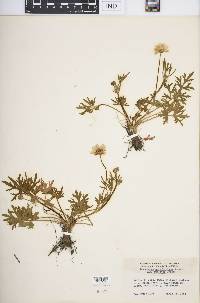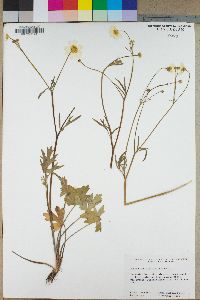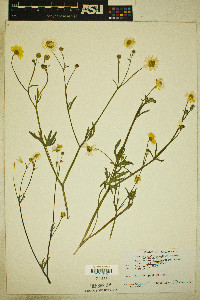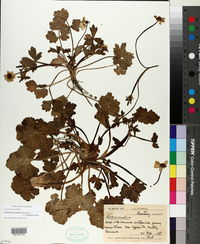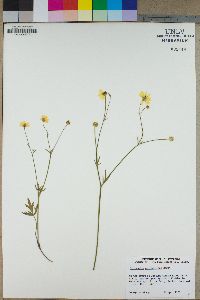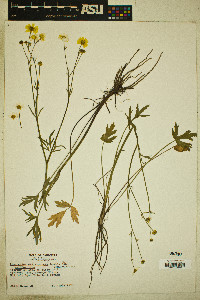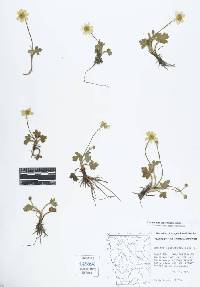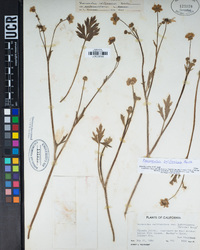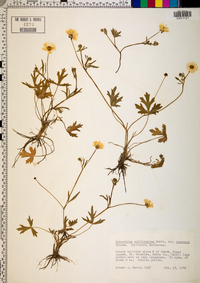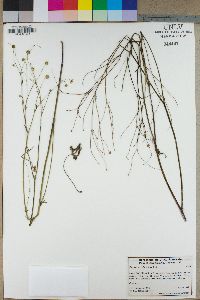Ranunculus californicus
|
|
|
|
Family: Ranunculaceae
California Buttercup
[Ranunculus californicus var. austromontanus L.D.Benson, moreRanunculus californicus var. gratus Jeps., Ranunculus californicus var. rugulosus L.D.Benson, Ranunculus californicus var. typicus L.D.Benson, Ranunculus rugulosus Greene] |
Stems erect to prostrate, never rooting nodally, hirsute, strigose, or glabrous, base not bulbous. Roots never tuberous. Basal leaf blades broadly ovate or cordate in outline, 3-lobed or -parted to 3-foliolate, 1.8-5.8 × 2.3-7.6 cm, leaflets or segments undivided or 1-2×-lobed or -parted, ultimate segments linear to orbiculate, margins toothed, crenate, or entire, apex acute to rounded. Flowers: receptacle glabrous or rarely hispid; sepals reflexed 2-3 mm above base, 4-8 × 2-4 mm, pilose; petals 9-17, yellow, (6-)7-14 × 2-6 mm. Heads of achenes globose or hemispheric, 3-7 × 4-9 mm; achenes 1.8-3.2 × 1.4-3.2 mm, glabrous, rarely hispid, margin forming narrow rib 0.1-0.2 mm wide; beak persistent, lanceolate, curved, 0.2-0.8 mm. In addition to the range given, localized populations of Ranunculus californicus have been reported recently from a few islands in the vicinity of Victoria (British Columbia and Washington) (M. F. Denton 1978; T. C. Brayshaw 1989). Those populations are small and introgress freely with R . occidentalis wherever they come together. Denton referred her specimens to R . californicus var. cuneatus ; Brayshaw reported both varieties from the same small populations, but his data are consistent with populations of R . californicus var. cuneatus that are introgressing extensively with R . occidentalis . Although both Denton and Brayshaw treat R . californicus as a native species in that region, several reasons support the belief that it is introduced there. No reports of R . californicus in the area occur prior to 1978, although the area is quite well collected (especially Victoria, B. C. and the San Juan Islands, Washington); a long history of extensive marine trade between Victoria and San Francisco has resulted in the introduction of a number of other California species to the area; and for scattered small populations of R . californicus to have persisted for long periods in the face of free introgression from R . occidentalis seems unlikely. Given the small population size and the introgression from R . occidentalis , it is questionable whether R . californicus can persist in the area. In addition to the range given, localized populations of Ranunculus californicus have been reported recently from a few islands in the vicinity of Victoria (British Columbia and Washington) (M. F. Denton 1978; T. C. Brayshaw 1989). Those populations are small and introgress freely with R . occidentalis wherever they come together. Denton referred her specimens to R . californicus var. cuneatus ; Brayshaw reported both varieties from the same small populations, but his data are consistent with populations of R . californicus var. cuneatus that are introgressing extensively with R . occidentalis . Although both Denton and Brayshaw treat R . californicus as a native species in that region, several reasons support the belief that it is introduced there. No reports of R . californicus in the area occur prior to 1978, although the area is quite well collected (especially Victoria, B. C. and the San Juan Islands, Washington); a long history of extensive marine trade between Victoria and San Francisco has resulted in the introduction of a number of other California species to the area; and for scattered small populations of R . californicus to have persisted for long periods in the face of free introgression from R . occidentalis seems unlikely. Given the small population size and the introgression from R . occidentalis , it is questionable whether R . californicus can persist in the area.
|




